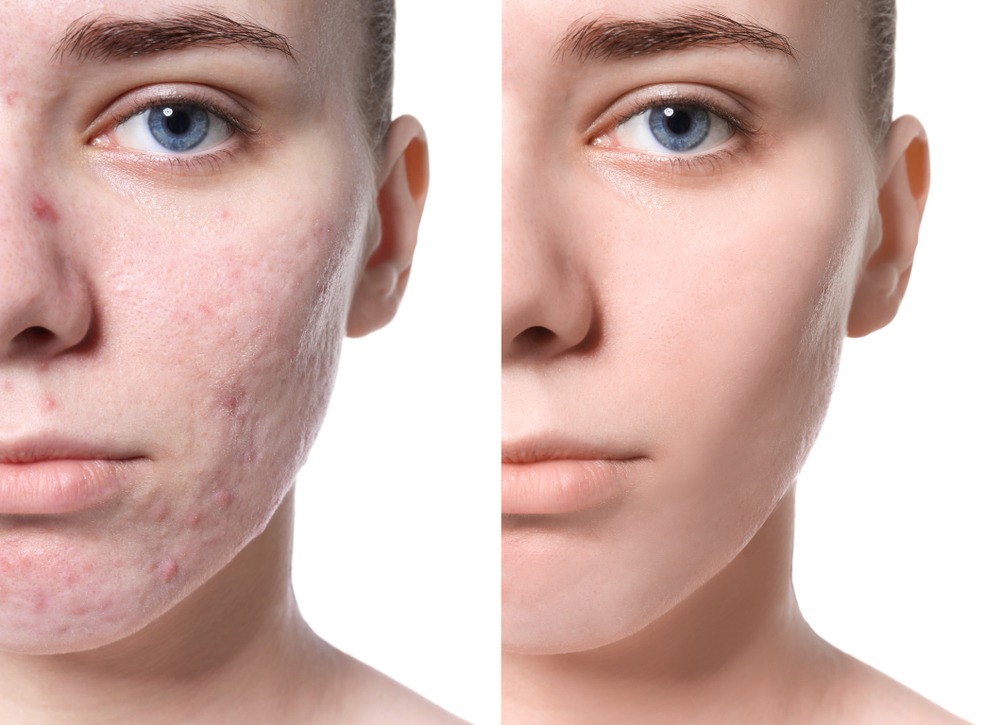Exploring Skin Problems: Dealing With and identifying Acne Scars for Healthier Skin
Acne marks represent a significant concern for individuals looking for to preserve healthy skin, as they can affect both appearance and self-worth. Comprehending the various kinds of scars, from atrophic to hypertrophic, is necessary for figuring out suitable treatment alternatives.
Comprehending Acne Marks

The body's all-natural recovery process can result in either atrophic marks, which show up as depressions in the skin, or hypertrophic scars, which are increased and arise from overproduction of collagen. Additionally, the mental toll of acne marks should not be ignored; lots of people report sensations of embarrassment, stress and anxiety, and decreased self-confidence. This psychological worry can affect social interactions and overall lifestyle.
Resolving acne marks calls for an extensive understanding of their development and effect. Recognition of the possibility for lasting effects connected with untreated scars can motivate individuals to seek appropriate therapies. Early intervention and effective administration strategies can significantly improve skin look and enhance mental durability, highlighting the value of comprehending the complexities bordering acne marks.
Types of Acne Scars
Acne scars can be classified right into distinctive types, each exhibiting one-of-a-kind characteristics and calling for details therapy techniques. acne treatment for sensitive skin. The main sorts of acne marks consist of atrophic, hypertrophic, and keloid marks

Hypertrophic marks, in contrast, are elevated above the skin level and are the outcome of excessive collagen production throughout the healing process. They usually continue to be within the boundaries of the original acne sore. Keloid marks are similar however extend beyond the original injury website, creating larger, increased locations that can be scratchy or uncomfortable.
Comprehending these kinds of marks is important for choosing ideal therapy options. Different scars may react far better to specific therapies, such as laser treatments, fillers, or surgical interventions, highlighting the relevance of a customized approach to acne scar administration.
Recognizing Your Scars
Acne scars normally drop right into two classifications: hypertrophic and atrophic marks. These can further be classified into ice-pick marks, boxcar marks, and rolling marks, each exhibiting distinct attributes and calling for various approaches for assessment.
Hypertrophic scars, on the other hand, are elevated and occur as a result of extreme collagen production during the recovery procedure. Recognizing the certain features of your marks-- such as texture, width, and deepness-- is important for appropriate identification (acne treatment for sensitive skin). Furthermore, think about the circulation of scars across your skin, as this can suggest the seriousness and duration of the acne condition
Involving with a skin doctor can give beneficial understandings right into the nature of your scars, aiding in the differentiation in between numerous kinds. A complete understanding of your scars will ultimately lead to an extra customized and efficient treatment strategy, making certain a more clear and healthier complexion.
Therapy Choices Available
Identifying the details kind of acne scars present on your skin prepares for discovering efficient treatment alternatives. Typical sorts of acne marks include atrophic (clinically depressed), hypertrophic (increased), and post-inflammatory erythema.
For atrophic scars, alternatives such as chemical peels, microneedling, and laser resurfacing are commonly used. Chemical peels off utilize acids to get rid of the outer layer of skin, advertising new cell growth. Microneedling entails tiny needles that develop micro-injuries, promoting collagen manufacturing. Laser resurfacing targets damaged skin cells, boosting structure and tone.
Hypertrophic marks can be treated with corticosteroid injections to squash the scar or laser treatment to decrease redness and enhance look. Silicone gel sheets and pressure dressings might also help in taking care of increased marks.
Furthermore, facial fillers can briefly complete clinical depressions from atrophic marks, while surgical excision may be ideal for severe situations. Each therapy option has its advantages and factors to consider, making it essential to speak with a dermatologist. They look at more info can supply tailored recommendations based on the kind and severity of your scars, in addition to your skin kind and total health.
Tips for Prevention
Efficient site link avoidance strategies can considerably minimize the chance of creating acne scars. The primary step is to maintain a consistent skincare routine that consists of gentle cleansing, exfoliation, and moisturizing. Utilizing non-comedogenic products assists stop clogged up pores, which can aggravate acne. Additionally, incorporating topical treatments consisting of salicylic acid or benzoyl peroxide can successfully decrease and take care of breakouts inflammation.
Avoiding need to pop or choose acne lesions is crucial, as this can lead to much deeper skin damages and enhance the risk of scarring. Rather, take into consideration utilizing a chilly compress or over the counter treatments to lower swelling and soreness.
Sun protection is an additional crucial aspect of avoidance; ultraviolet (UV) rays can dim marks and hinder the healing procedure. Applying a broad-spectrum sun block with at least SPF 30 daily can shield the skin and promote also recovery.
Finally, maintaining a well balanced diet plan rich in minerals, antioxidants, and vitamins sustains skin health and recovery. Staying moisturized and handling stress degrees can also play a substantial function in reducing acne flare-ups. By carrying out these techniques, people can considerably decrease their possibilities of creating acne scars.
Conclusion
In final thought, understanding and recognizing acne marks is necessary for effective therapy and accomplishing healthier skin. Various types of acne marks, consisting of hypertrophic and atrophic marks, demand specific interventions tailored to individual requirements.
The body's natural healing process can result in either atrophic scars, which appear as anxieties in the skin, or hypertrophic marks, which are raised and result from overflow of collagen. They are further separated right into 3 subtypes: ice choice marks, boxcar marks, and rolling marks. Acne scars typically drop right into 2 classifications: hypertrophic and atrophic scars. These can additionally be categorized into ice-pick scars, boxcar scars, and rolling scars, each showing distinctive characteristics and requiring various approaches for analysis.
Numerous kinds of acne scars, including atrophic and hypertrophic marks, require certain interventions tailored to individual site web demands.